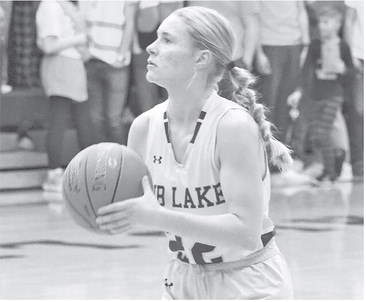Another must-watch sports series for fans to pass the time


Matt’s Bleacher Shots
First there was “The Last Dance.” Then a second documentary series emerged, providing a weekly hour or so of riveting footage and commentary for fans desperate for something to watch in this current black hole of sports entertainment.
I was a little late to the party and still have some catching up to do, but so far, “Legacy: 100 Seasons of the Green Bay Packers” has been a fun ride through time in the smallest city in major American professional sports.
It’s a 10-part series, covering a decade at a time, that will conclude any day now with a look back at 2010-19. You can find the previous nine chapters at packers. com, on Facebook and outlets like Amazon Fire TV, Apple TV and Roku.
Obviously if you’re a fan of the Bears, Vikings, Steelers or whoever, you’re not going to appreciate it as much. It’s certainly presented with a hometown slant.
For example, if you thought Vince Lombardi was idolized before, wait until you watch the 1960s and 1970s chapters. Actually, with the current state of this country, everyone in America should watch the 1970s chapter and learn the lessons Lombardi taught the whole city of Green Bay on race relations. Incredible stuff that isn’t as well known about the legendary coach.
Because I discovered the documentary late, I’ve been working my way backwards. But that’s cool because when it comes to historical stuff, just as it was with “The Last Dance,” I get a bigger kick out of reliving the stuff I remember and learning more about that stuff I remember but didn’t fully comprehend at the time than I do learning about stuff I wasn’t alive for. And I was a history minor in college –– not that I’ve retained any of that knowledge.
Since finding “Legacy” two weeks ago, I’ve already watched the 80s, 90s and 2000s episodes twice. For what it’s worth, the first season I remember watching NFL football was 1979, when I was nearing my eighth birthday.
As a kid, I didn’t understand how the organization worked, who made decisions, the importance of drafting the right players and so on. I just remembered the Packers generally weren’t very good, they found some strange ways to lose games because they couldn’t get defensive stops when they needed them and fans were ready to move on from likable but not very successful head coach Bart Starr, even though the offense was putting up some prolific numbers toward the end of his tenure.
Yet we all sat our butts on the couch every fall Sunday and watched for three hours from start to finish, still believing they could find a way to win.
Seeing this era of Packer football again now through adult eyes and with the aid of grainy old video and insights of the people who lived it, you realize just how messed up this organization was in the 1970s and 1980s while stuck reliving its glory from the 1960s.
From having people with no football knowledge serving in top organizational roles, to allowing Starr to run drafts even though he was struggling just to establish himself as a coach and just bad decisions everywhere, it was a mess. The 1970s segment on how bad Dan Devine was is fascinating.
It was interesting to see how Starr’s firing was portrayed. I don’t remember him being defended that much when he was coldly fired a day after the 1983 season ended with a loss to the Bears that knocked the Pack out of the playoffs. Now people believe he was actually getting pretty good at it when he was canned. He was just given the job long before he was ready due to his icon status.
Those of us old enough to remember the coaching tenure of Forrest Gregg from 1984-87 know it was pretty bad on game days. Again, as a teen, I didn’t realize how bad it was behind the scenes as the players of the day portray it.
At the time he was hired, you sorta understood the belief the Packers needed “a tough guy” because the team did seem soft compared to the league powers at the time. But to hear icons of the ‘80s like Lynn Dickey and Larry McCarren say that Gregg despised players from the Starr era raised my eyebrows. Certainly, the stories have been out there for years about how he drove players to the ground in practice and training camp.
Then there was the decision to draft Tony Mandarich with the second pick in the 1989 draft. The “credit” for that pick goes to Tom Braatz, the Packers’ vice president of football operations who hit on draft picks like Don Majkowski (in the 10th round no less), Sterling Sharpe and LeRoy Butler. Looking at that pick 31 years later, how buried in the sand were our heads in regards to steroids? Plus there’s the names surrounding Mandarich in the list of picks from that first round of the draft. Troy Aikman at number one, Barry Sanders at three, Derrick Thomas at four, Deion Sanders at five, or even Steve Atwater at 20 or Andre Rison at 22.
As bad as that decision was, it illustrates how a single decision, or a couple of them, can turn an NFL franchise the right way or the wrong way. Not surprisingly, especially for fans in my age bracket, the best part of the documentary comes in the ‘90s episode and the re-telling of the process that brought general manager Ron Wolf, head coach Mike Holmgren, quarterback Brett Favre and the NFL’s first mega-free agent Reggie White to Green Bay. The dominos probably truly started to fall right in the late 1980s when Bob Harlan took over the president position. Harlan, as we know now, had the right mix of understanding business and public relations while knowing you need football men to make football decisions.
Enter Wolf, a noted history buff himself who actually wanted to come to Green Bay when most noted personnel men would have run the other way. It’s awesome to hear him talk about how he initially offered the head coaching job to Bill Parcells, who turned it down for health reasons, and that Holmgren was his only other fall back for that position. If Holmgren had taken a different job, Wolf still says he has no idea who he would’ve gone after.
The stories have often been repeated about how much Wolf believed in Favre while making the famous trade with Atlanta to get him. But it’s awesome to hear Wolf and Harlan relive those discussions.
I’ve often wondered if the legend of Favre is overstated. He did lose more games in his 16 years with the team with bone-headed throws than people want to admit. But it’s hard to argue with viewpoints presented in the “Legacy” series that say none of the nearly 30 years of consistent on-field success the Packers have enjoyed, not to mention the community support to turn Lambeau Field into what it is, happens if he doesn’t become the player he was.
You also have to wonder where this franchise would be without Lombardi and the success his teams had in the ‘60s. Would it have even survived if some other coach had continued the losing of the 1950s through the ‘60s and into the ‘70s?
If I have one complaint about the recent portions of the documentary, it would’ve been fascinating to hear more of the dirt regarding the quarterback transition from Favre to Aaron Rodgers during the 2000s episode. It eventually turned out OK, but what a turbulent, hard-to-put-into-words time that was in 2008.
I guess that’s where this documentary differs from “The Last Dance” in keeping things more family friendly.
Matt Frey is the Sports Editor at The Star News.




